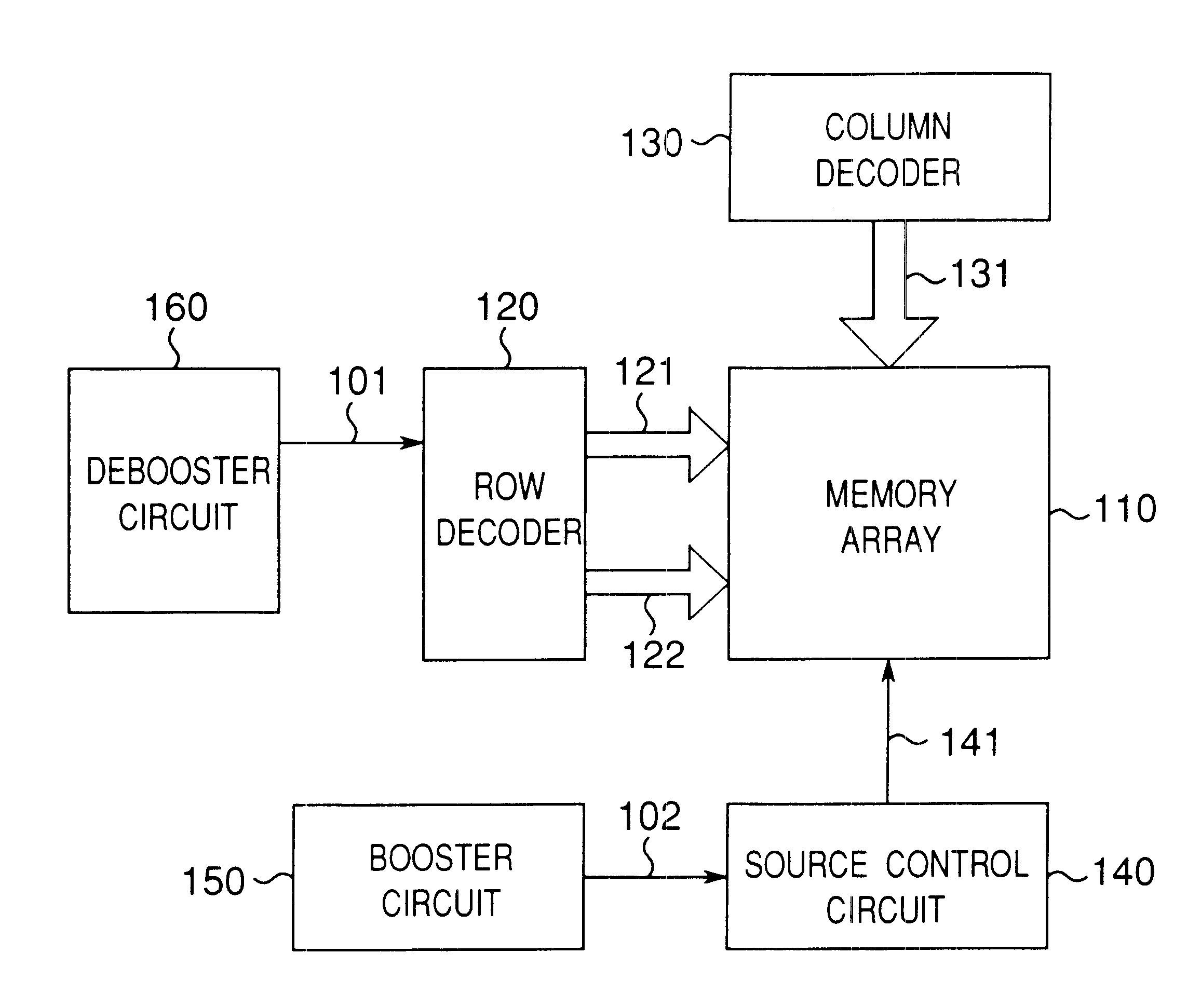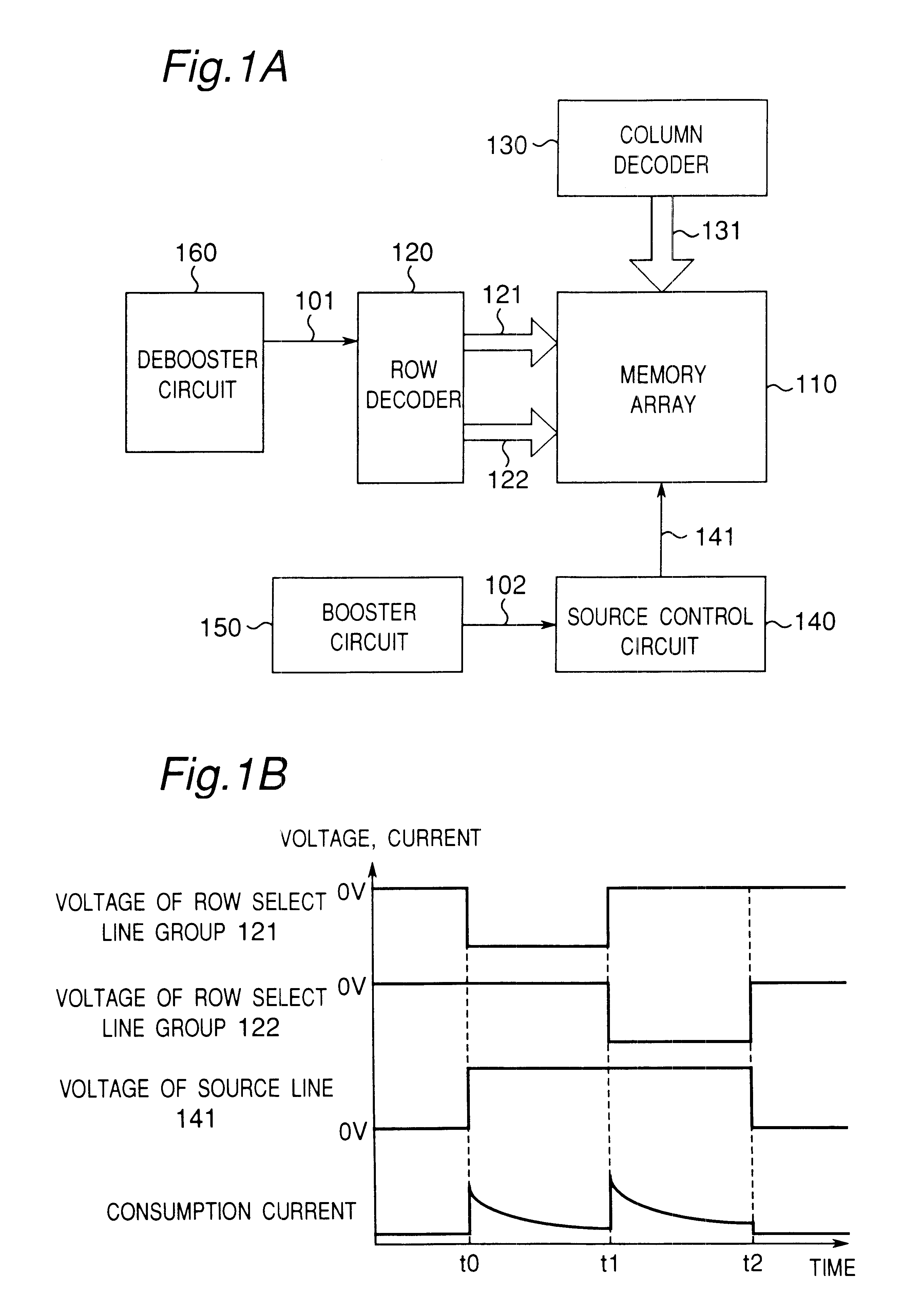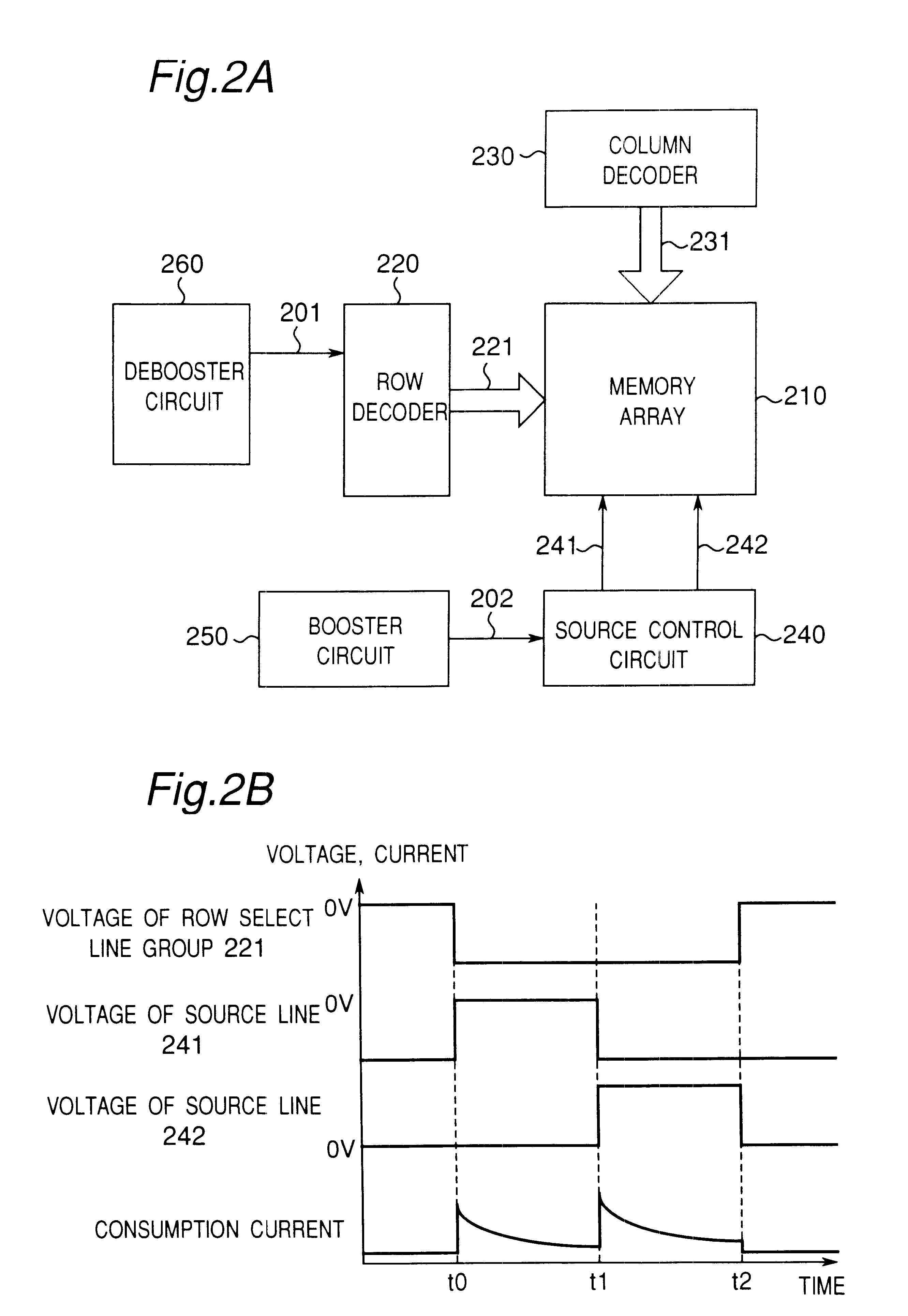Nonvolatile semiconductor storage device with limited consumption current during erasure and erase method therefor
a semiconductor storage device and non-volatile technology, applied in semiconductor devices, digital storage, instruments, etc., can solve the problems of reducing the current efficiency of the erase operation, generating holes, deteriorating the reliability of the memory cell, etc., and achieve the effect of high efficiency
- Summary
- Abstract
- Description
- Claims
- Application Information
AI Technical Summary
Benefits of technology
Problems solved by technology
Method used
Image
Examples
first embodiment
This first embodiment is provided with a memory array 110 that becomes an erase unit, a row decoder 120 for controlling a row select line group 121 and a row select line group 122 and a debooster circuit 160 for generating a negative voltage 101 to be supplied to the row decoder 120. This first embodiment is further provided with a column decoder 130 for controlling a column select line group 131, a source control circuit 140 for controlling a source line 141 and a booster circuit 150 for generating a high voltage 102 to be supplied to the source control circuit 140.
The row select line group 121 and the row select line group 122 are respectively constructed of a plurality of row select lines, while the column select line group 131 is constructed of a plurality of column select lines. Although FIGS. 1A and 1B show an example in which the row select lines connected to the memory array 110 are divided into two row select line groups 121 and 122, it is also possible to further reduce th...
second embodiment
This second embodiment is provided with a memory array 210 that becomes an erase unit, a row decoder 220 for controlling a row select line group 221 and a debooster circuit 260 for generating a negative voltage 201 to be supplied to the row decoder 220. This second embodiment is further provided with a column decoder 230 for controlling a column select line group 231, a source control circuit 240 for controlling a source line 241 and a source line 242 and a booster circuit 250 for generating a high voltage 202 to be supplied to this source control circuit 240.
The row select line group 221 is constructed of a plurality of row select lines, while the column select line group 231 is constructed of a plurality of column select lines. Although the case of two source lines will be described in connection with this embodiment, it is also possible to increase this number, similarly to the division of the row select line group in the first embodiment.
Next, FIG. 3A and FIG. 3B show examples o...
third embodiment
This third embodiment relates to an overerase decision method with the use of the nonvolatile semiconductor storage device of the first or second embodiment.
As shown in the flowchart of FIG. 5, in an erase operation of a flash memory, normally, after an erase voltage is applied (S1, S5), an erase verify (S2, S6) for verifying that the threshold value (threshold voltage) has lowered enough as well as an overerase verify (S3, S7) for verifying that the threshold value has not lowered too much are executed.
If it is found by this erase verify (S2, S6) that threshold values of memory cells (area 1, area 2) have not lowered enough, a further erase voltage is applied (S1, S5). Also, if it is found by the overerase verify (S3, S7) that the threshold values have lowered too much, the threshold values are raised by writing into memory cells in the area 1 and the area 2 that could be in an overerased state (S4, S8).
The storage contents erase method of the third embodiment is constituted by inc...
PUM
 Login to View More
Login to View More Abstract
Description
Claims
Application Information
 Login to View More
Login to View More - R&D
- Intellectual Property
- Life Sciences
- Materials
- Tech Scout
- Unparalleled Data Quality
- Higher Quality Content
- 60% Fewer Hallucinations
Browse by: Latest US Patents, China's latest patents, Technical Efficacy Thesaurus, Application Domain, Technology Topic, Popular Technical Reports.
© 2025 PatSnap. All rights reserved.Legal|Privacy policy|Modern Slavery Act Transparency Statement|Sitemap|About US| Contact US: help@patsnap.com



